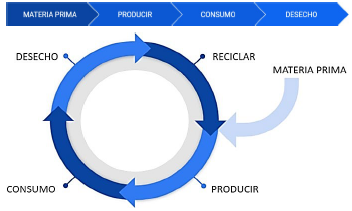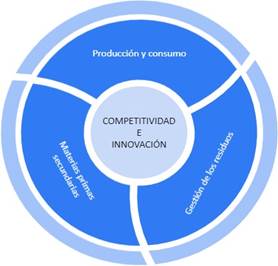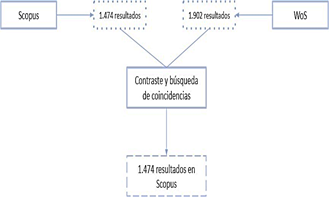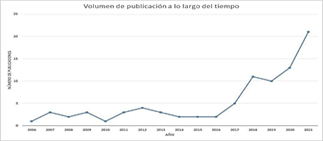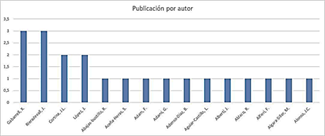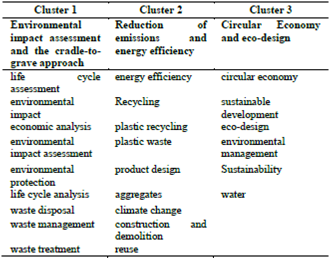1. Introduction
In a society in which environmental awareness is on the rise and in which both the availability and the costs of resources fluctuate, more organizations are recognizing that the traditional linear system of production and consumption entails greater exposure to risks. Added to this, there is the implementation of increasingly demanding legislation on the environment that forces the incorporation of the environmental variable in the decision-making process.
Faced with this situation, trying to change from a linear model to a circular one, we have gone on to evaluate how the product is designed, manufactured, transported, stored, sold, used, and managed throughout its life cycle. With all this, it is about ensuring that the product, in its life cycle, does not end up as waste, but that it can, after proper treatment, start a new cycle again.
It is precisely from this indication of mutual influence between both concepts that the motivation to conduct this study arises. To analyze this influence, we conducted a study of the impact of eco-design on the circular economy, through a bibliometric review of the publications made in Spain over a given period. An objective of this work is to measure to what extent eco-design has affected the evolution and application of the circular economy through the analysis of the frequency of publications and the type of documents published by researchers in these areas of activity. Additionally, it also aims to observe the evolution of knowledge in this field, determining the most prominent and influential authors.
The article is structured as follows: in section 2, we lay the theoretical foundations of our study, through a theoretical framework; in section 3, we explain the methodology used; in section 4, we present the results and discussion; and, finally, we present the conclusions of this work.
2. Theoretical framework - The circular economy and Eco-design
2.1. The circular economy
The circular economy is a strategy that seeks to maximize available resources, whether material or energy, so that they remain, if possible, within the production cycle. Therefore, one of the objectives of the circular economy is to reduce the generation of waste, advocating the use of what has already been generated. In general terms, it is about dissociating economic growth and the limited consumption of resources. [9,8,26]
The circular economy arises from the scarcity of natural resources, pollution, and climate change. This strategy proposes moving from the current linear model (Graph 1), which is aggressive to the environment and has led to the current scarcity of resources, to a circular one (Graph 1). Thanks to certain driving factors, such as the inclusion of the environmental variable in in-company decision-making, this model allows, among other things, the products that have completed a life cycle to be introduced into a new cycle as many times as the durability of its components allows.
On the other hand, the circular economy seeks to generate network value chains in which optimal use of resources is made [10,20]. For this purpose, the most relevant aspects are those indicated in Graph 2, in each case for the following reasons: [10,22]
Production and consumption: Regarding production, both the product-design phase (eco-design) and the production phase (eco-efficient manufacturing) have an impact on obtaining and using resources and on the generation of waste throughout the life of the product. And, in consumption -understood as responsible consumption-, this phase is crucial when it comes to preventing and reducing the generation of waste.
Waste management: A waste management hierarchy determines how the European Union (EU) waste hierarchy is put into practice.
Secondary raw materials: The reintroduction of secondary raw materials as new raw materials is essential. In this way, the materials that can be recycled are reinvested.
2.1.1. Benefits of the circular economy
The benefits derived from adopting the circular economy strategy are as follows: [11]
2.1.2. European green deal
The European Green Deal aims to transform the EU into a modern, competitive, and efficient economy with resources. This pact will be financed by a third of the Next Generation EU funds and the EU budget. [12]
The European Green Deal establishes an action plan to: [12]
Promote the efficient use of resources through the transition to the circular economy
Restore biodiversity and reduce pollution
In addition, it details both the financing tools available and the investments necessary to carry them out in a way that the transition is fair and inclusive. [12,23]
The main objective of the EU is to be climate neutral by 2050 and, in addition to having proposed a law that turns this political commitment into a legal obligation, to achieve this objective it will be necessary to act in all sectors of the economy. [12]
2.2. Eco-design
Eco-design aims to incorporate environmental criteria in the conception and development phase of each product. For this, it is about taking preventive measures to reduce the environmental impacts in the distinct phases of its life cycle - from production to disposal. With all this, it is possible to include the environmental factor as one more requirement of the decision-making process about the product and with the same relevance as other factors such as cost, safety, or quality. [13]
Considering all this, eco-designed products are innovative, have better environmental behavior, and have quality at the height of their market competitors. For this reason, the use of eco-design is increasingly important for businesses, since it represents a clear advantage for the companies implementing it. [13]
2.2.1. Methodologies, techniques, and tools for eco-design
The main methodologies, techniques, and tools for eco-design are as follows: [10]
ISO 14006 - The standard provides guidelines for establishing, documenting, implementing, maintaining, and continuously improving eco-design management as part of an environmental management system. This system is certifiable and can be integrated into any other existing management system in the company, such as ISO 9001 or ISO 14001, thanks to its characteristic high-level structure.
PILOT - It is a set of guides and checklists to identify areas for improvement and new product opportunities based on eco-design. The phases are:
IHOBE (eco-design manual) - It is a manual where a methodology adapted to the characteristics of the Basque industrial sector is developed and can also be applied more generally to other sectors. It establishes seven stages when applying eco-design:
- Preparation of the project - The work team is established, the product is designed, and the motivating factors are established.
- Environmental aspects - Contrasting with other reference products, the main aspects to be considered are established and analyzed, with special emphasis on the environment.
- Ideas for improvements - The most suitable ideas are chosen and the specifications for the new product are made.
- Development of concepts - The initial design of the product is conducted, with several options among which the definitive one is finally chosen.
- Product development in detail
- Action plan - Potential future improvement actions for both the product and the company
- Evaluation - The launch campaign for the new product is defined and the project is evaluated with results.
3. Methodology
To analyze the influence of eco-design on the circular economy, it is necessary to define the tools that are going to be used in its development. In our research, Scopus and Web of Science (WoS) databases, and the VOSviewer program are the tools used to conduct network mapping.
Scopus is a database of bibliographic references and citations of articles from scientific journals of Elsevier company. [1]
WoS is a scientific information platform provided by Thomson Reuters, which offers us analysis tools that allow us to evaluate its scientific quality. [4]
VOSviewer was developed by Nees Jan van Eck and Ludo Waltman from the Center for Science and Technology Studies (CWTS) at Leiden University. This software tool allows for building and visualizing bibliometric networks. [5] We will use VOSviewer to [5] create maps based on network data.
Bibliometrics is the application of mathematics and the statistical method to the publication of the results of scientific research. It starts from the need to quantify certain aspects of science to compare, measure and objectify scientific activity. [6]
When new knowledge resulting from scientific research is published, it acquires value. But it is not until it is applied in a specific field that this new knowledge contributes to the development of society. In this process of measuring the impact of scientific activity, bibliometrics plays an essential role, since it gives a measurable and “quantifiable” value to the result of that scientific activity. In this way, it is possible to compare the creation of an institution, research group, country, etc. relative to others. [6]
By applying bibliometric techniques, a global framework of the performance and impact of scientific activity in each region can be obtained. In this way, decision-making is facilitated when determining policies or allocating resources to different lines of research, since the journals with the greatest impact and the specializations that need to be promoted are previously identified. [6]
It is necessary to break down the study concepts into representative keywords to conduct the searches in the two databases used. In this case, the words selected for each of them were as follows:
ECODESIGN - industrial design, designs, sustainability, methodology, environmental impact, life cycle analysis, energy efficiency, green roof
CIRCULAR ECONOMY - circular economy, responsible consumption, sustainable design, sustainable development, recycling, regenerative design, from Cradle to Cradle
In Scopus, the keywords selected for each concept are combined, and different searches are conducted. To adjust the results, the following filters were applied:
In WoS, the search coding is different, and some filters applied afterward in Scopus searches are performed beforehand in the case of WoS. The coding used in this case was determined considering the search selected in Scopus to conduct, then, a more objective contrast.
CODING - TS = (circular economy OR recycling OR from Cradle to Cradle OR responsible consumption) AND TS = (eco-design OR industrial design OR life cycle analysis OR environmental impact OR sustainability methodology OR energy efficiency)
Comparably the searches in Scopus have been conducted, the search is limited to Spain, and the same filters are applied.
4. Results and discussion
4.1. Results
In Scopus, the search selected for the study brought 1,474 publications.
In WoS, 1,902 results were obtained, which is higher than the value obtained in Scopus.
Once the searches have been conducted in both databases, the results are compared to establish which one will be used in the rest of the phases of the study. In this way, it was observed how most of them coincided. With the results obtained, it was decided to use the results of the Scopus database, as shown in Graph 3.
Firstly, to conduct more detailed analyses, it is filtered by subject area, eliminating those that are not considered relevant to the object of study (Pharmacology, etc.). Thus, 342 articles are eliminated, leaving 1,132 articles.
Subsequently, the summaries of each of them were read analyzing and assessing their relevance to the topic to be studied. In addition, it was also sought that both eco-design and the circular economy were mentioned within them.
After conducting this analytical reading, a total of 86 articles were obtained that were considered relevant for this study.
4.2. Quantitative analysis
Starting with the quantitative analysis of the results obtained, with the data provided by the Scopus database itself, a series of graphs were made to study aspects such as the typology of publications, the thematic areas, the annual volume of publications, etc.
In a complementary way and to illustrate the results more visually, the distance maps made in VOSviewer are included.
4.2.1. Scientific production analysis
We analyze the volume of publications of Spanish researchers over the years in Graph 4.
It should be noted that, on the one hand, the minimum reached in 2010 was derived from the crisis and economic instability that occurred in Spain in 2008. And, on the other,
the number of publications as of 2016 suffered a notable increase, and the number of publications grows exponentially until 2021. This may be due to the growing environmental awareness that has been developed and implanted in society, converting issues related to environmental care into lines of research and publication of great interest.
This increase in scientific production may also have been driven by the fact that, in December 2015, the European Commission published the communication Closing the loop - An EU action plan for the Circular Economy.
In addition, the European Commission also implemented the Ecological Design Work Plan 2016-2019 [15] to further promote the transition from a linear to a circular model.
Bearing this in mind, the drastic increase in scientific publications, and the fact that this increase has continued until today and will continue in the coming years are logical.
4.2.2. Co-authorship analysis by country
Another crucial factor is to study the origin of the publications made.
In our study, we have limited the search to Spanish publications (86), although it can be seen in the graph that there are collaboration links with several countries, the main ones being the United Kingdom, Italy, and Germany. But not only are there unilateral relationships between them but also, through the network map shown in Graph 5, the existence of various interrelationships between countries is clear.
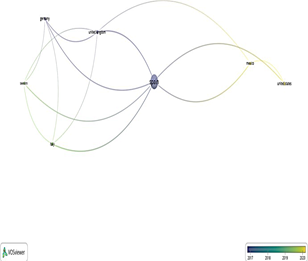
Source: Own elaboration based on Scopus data and VOSviewer
Graph 5: Map of co-authorship networks between countries
The map shown in Graph 6 also includes a timeline illustrated through colors. On the one hand, in 2016-2017, Spain had more relationships with the United Kingdom, Germany, and Sweden. And, on the other hand, in recent years, the relationship has been greater with countries such as Mexico, the United States, and Italy. Finally, the absence of a relationship with Asian countries is striking, considering the volume of world production that comes from these. A large part of the products imported by Spain come from Asian countries and it could be of interest for Spain to know the conditions or under what philosophy or thought those goods have been produced. In addition, since Asia is responsible for a large volume of production over the world total, it would be interesting for Spain to align its lines of research with this continent in terms of the circular economy and the eco-design.
Graph 6 shows the main authors of the publications under study. None stands out for having a large number of publications, although this may be due to the filtering of the publications before their study. Despite this, the authors with the most publications are Gabarrell X. (3 publications) and Rieradevall J. (3 publications), followed by Cortina JL (2 publications) and López J. (2 publications). [25-28]
4.3. Co-occurrence analysis
Before generating the network map and to get a “cleaner” and clearer map, we used Thesaurus. We generate the network map with VOSviewer (Graph 7).
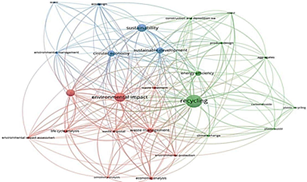
Source: Own elaboration based on Scopus data and VOSviewer
Graph 7: Map of co-occurrence networks with Thesaurus
The main nodes are recycling, environmental impact, energy efficiency, sustainability, circular economy, and sustainable development. In addition, in this case, it is observed that the relationship between the terms “eco-design” and “circular economy” is weaker than that between “eco-design” and “sustainable development.” This may be because the term “sustainability” is increasingly being used to address issues related to the circular economy.
The clusters that are identified in the network are collected in Table 1 where the dominant terms in each of those clusters are highlighted according to the link strength, with which we propose a name for each cluster.
4.4. Discussion of the results
Throughout this work, a total of 86 Spanish publications on circular economy and eco-design were studied between 2006 and 2021. From these, the most relevant terms were extracted, and their co-occurrence was analyzed, resulting in three well-differentiated fields of knowledge:
- Environmental impact assessment and cradle-to-grave approach
- Reduction of emissions and energy efficiency
- The circular economy and eco-design
It is key to the objectives of this study that we analyze the nature of each one of them and the interrelationships observed between the terms that make up those fields of knowledge.
4.4.1.Environmental impact assessment and the cradle-to-crave approach
The dominant term in this first field of knowledge, as can be seen on the map, is “environmental impact.” In this case, this term is strongly related to the terms “life cycle assessment” and “waste management.” This strong relationship is justified by the fact that, currently, both the evaluation of the life cycle of products and the management of waste at the end of the life cycle have the objective of reducing the environmental impact. In addition, the union of these two terms evokes the cradle-to-grave approach, which seeks to study all the stages of the life cycle, from the extraction or obtaining of raw materials to the management of the waste generated at the end of its useful life. [14,19,21]
Terms such as “economic analysis” appear, making it clear that, even though the reduction of environmental impact is the priority objective today, the economic factor continues to be a conditioning factor for organizations.
Finally, it is worth highlighting the strong networks that leave the environmental impact and life cycle assessment nodes towards the next cluster “reduction of emissions and energy efficiency.” This union invites us to think that we are moving from the cradle-to-grave approach to cradle-to-cradle. Together with the American architect Bill McDonough, the German chemist and visionary Michael Braungart developed the cradle-to-cradle concept and its certification process. This design philosophy considers all materials used in industrial and commercial processes as nutrients, of which there are two main categories - technical and biological. The cradle-to-cradle framework focuses on the design of efficiency in terms of products with a positive impact and on the reduction of negative impacts of trade through efficiency, [17] since the objective of this framework lies in promoting the use of durable materials that can be reused after being discarded for the manufacture of a new product - that is, that they can return to the cradle of a new life cycle.
4.4.2. Reduction of emissions and energy efficiency
The dominant term in this first group of knowledge, as can be seen on the map, is recycling. Again, based on the thickness of the lines that connect this node, the frequency with which it is related to each of the remaining nodes in the publications studied is identified. In this case, the term “recycling” is strongly related to the terms “energy efficiency” and “reuse.” The terms recycling and reusing have been going together for years and the study shows that they continue to be related and used together in current publications. The relationship with energy efficiency is newer but equally justified since it has been shown that the use of recycled materials generates more efficient production with energy savings. An example of this can be products based on recycled aluminum.
On the other hand, the presence of the term “construction and demolition waste” evidences the fact that a large part of the publications made in the determined period aim at searching for new, more sustainable materials for construction. Therefore, further research in this area is identified as a future line.
4.4.3. The circular economy and eco-design
This last group of knowledge is the one of greatest interest for the present work since it includes the two topics to be studied: the circular economy and eco-design. The dominant term, in this case, is “sustainability” and this is strongly related to both the circular economy and sustainable development. The fact that the circular economy is so strongly related to sustainability indicates that the Spanish scientific community continues to perceive the circular economy as an economic concept that includes sustainability in its criteria. However, the relationships shown in Figure 7 show that the set of publications studied reflects the circular economy as the intersection of economic, environmental, and social factors since each of the central nodes is related to one of these three terms
Strong relationships are also observed between eco-design with sustainable development and environmental management. This relationship is justified considering that the basis of eco-design is the design of products in such a way that disassembly is simple and that they are made of durable materials so that, with slight processing, they can go through numerous life cycles. This has, as a direct consequence, sustainable development and configures what environmental management is.
The weak relationship between the terms “eco-design” and “circular economy” and the terms with which each of them is related independently, lead us to think that eco-design is understood as a tool framed in the philosophy of the circular economy rather than as a component of the circular model that is intended to be achieved.
5. Conclusions
One of the objectives of the work has been to observe the evolution and current state of knowledge regarding Circular Economy and eco-design in the Spanish sphere. This has been analyzed through a general quantitative analysis of the sample of 86 publications resulting from various screening processes. This analysis has made the following points clear:
- Regarding the publication volume, some instability has been observed until 2016, which can be related to the economic instability that the country suffered in that period. As of 2016, on the other hand, there is a change in the trend, resulting in exponential growth until this same year and which is expected to continue. This change in the trend of scientific capital is related to the measures promoted by the European Commission in this field.
- As far as co-authorship with other countries is concerned, the collaborations with Italy and the United Kingdom have stood out for being the main collaborators and the Asian countries for the absence of collaboration with them. This is remarkable since a large part of world production comes from Asia, which makes it interesting that in the future Spanish knowledge networks are aligned or coordinated with Asian ones, intending to join forces and expand knowledge frontiers.
- The distribution of authors by the article has turned out to be quite diversified, with the authors with the most publications being Gabarrell, X. and Rieradevall, J., both with a total of three publications. This invites us to think that scientific capital is dense, but not very productive.
On the other hand, another objective of this work has been to study the impact of eco-design on the Circular Economy. In this case, what has been done to evaluate said influence has been an analysis of the co-occurrence of terms. A first raw analysis was proposed and the clusters or groups of knowledge that were formed were observed, as well as the relationships between the most influential terms. With the maps, groups of knowledge were identified, and in-depth analysis was conducted on each one, searching for and evaluating the interconnections between the terms. After having conducted this analysis, the following points are concluded:
- In the first analysis, the distance that separates the terms “circular economy” and “eco-design” stands out, despite being part of the same cluster. It is also striking that they were not two of the most important terms on the map, which shows that they are not yet deeply rooted concepts in the Spanish scientific community. In addition, the domain of the terms “sustainability” and “recycling” shows how the lines of research are oriented more toward sustainability objectives than delve into the concept of Circular Economy.
- Analyzing the map that allows identifying the terms used throughout the years, it is perceived how that predominance remained in the past. For example, the term “recycling” dominated in the 2014-2016 period, and it can be noted that, in 2028, terms such as “sustainability” and “eco-design” appeared and, already in 2020, terms such as “circular economy” and “climate change.” This indicates a trend more oriented toward the field of the circular economy.
- After using the Thesaurus, the three clusters finally identified have been: “environmental impact assessment and cradle-to-grave approach,” “reduction of emissions and energy efficiency” and “circular economy and eco-design.” And considering the discussion conducted around both the relationships between the terms that make up each one and the relationships between the dominant terms of each, future research oriented toward the fundamentals of the circular economy can be identified.
Thanks to the results of the clusters, a series of lines of research that can be developed have been observed. The cluster of emission reduction and energy efficiency tells us that eco-design applications should be developed in organizations as a guarantee of corporate social responsibility. To promote energy efficiency, it is essential to improve the manufacture of products, but with a clear initial eco-design. Research on the environmental consequences of products at the end of their life cycle should also be developed, which reinforces the results of cluster 1. Finally, it is necessary to continue working on eco-design strategies, to manufacture durable products and products that promote the circular economy in a way that benefits society.
In general conclusion, Spain still has a long way to go in the field of environmental research and especially in the Circular Economy. It would be interesting to extrapolate the study conducted for Spain in this paper to other countries to identify the relative position concerning them and to identify collaborations of interest to Spanish scientific capital.














